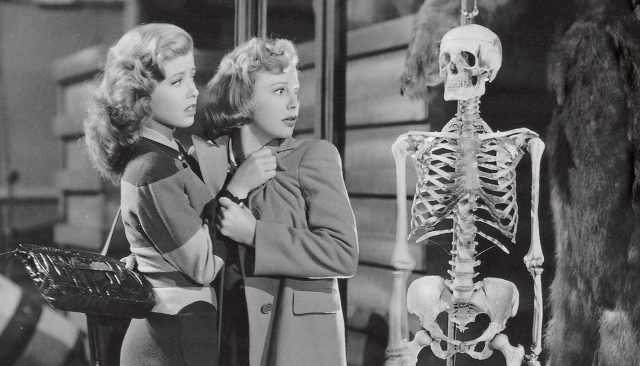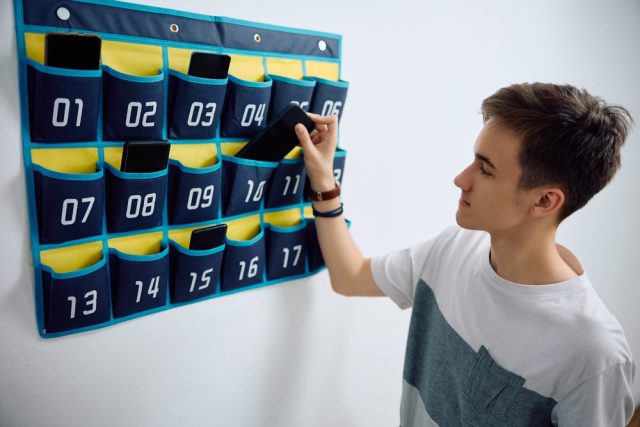Kids Discover Talks with Ashley Moore from America’s Test Kitchen
- March 27, 2025
- By Alice Knisley Matthias
Look through the pages of a cookbook or food magazine and you will see juicy hamburgers dripping with cheese on toasted buns. Have you ever watched an ice cream sundae being made on television and it has cloudy puffs of whipped cream on top?
Who makes the food look so delicious?
Meet Ashley Moore!
Ashley Moore is a host and on-screen test cook for Cook’s Country TV, a food stylist for America’s Test Kitchen and an instructor for America’s Test Kitchen Online Cooking School. She works to develop recipes and is a senior editor for a popular food magazine called Cook’s Country.
What kind of school and training helps prepare for this kind of career? Ashley has a degree from Johnson & Wales University and a BFA in acting from the California Institute of the Arts. That’s a background in cooking and acting which is the perfect training for her job of teaching people how to make delicious food on camera through television shows and videos..
Kids Discover got a chance to talk to Ashley about her career path.
What was the inspiration for you to become a chef and write recipes?
I grew up in a food family. Days revolved around food, as did holidays and events. In fact, I have distinctive memories of my family discussing what we were going to have for dinner, while eating breakfast or lunch. But I really couldn’t think of anything else than doing what my true passions were…cooking and being on camera. Now I am food stylist for both print and video, as well as an on-screen test cook for Cook’s Country (check PBS/ Create/ streaming services!).
Can you describe a typical day for you?
Depending on the time of year, and if we are shooting for America’s Test Kitchen or Cook’s Country, our two flagship shows, each day is a bit different. I am a full-time food stylist, so I spend most days working with our photo team on various images for our magazines, cookbooks, or website.
What can kids learn from reading and cooking recipes?
Kids can learn so much from reading, cooking, and baking! They can gain confidence, work on their sense of pace, and how to follow directions exactly how they are written. They can learn about different ingredients and perhaps where they come from.
What is your advice for kids who don’t think they like a certain food?
Close your eyes and take a teeny bite. Try holding your nose and taking a small bite! But, just try it. You could be surprised!
What can kids learn about other cultures through cooking?
Food is the best way to learn about other cultures. You see different types of ingredients, how people sit to eat, what utensil they use to eat (or don’t), and the ways people come together to enjoy a meal.
What is your favorite dish to make?
It isn’t my favorite dish, because that changes from time to time, but I love cooking dinner on Sundays for my family.
Where do the recipe ideas come from in the cookbooks you have worked on?
The ideas are surveyed out to people and we make a smaller list from that original list. We also are in constant touch with our publishing company that we work with and that plays a large factor too.
How do you approach a cookbook for kids differently than one for adults?
With our cookbooks for kids, each recipe is broken down very well by describing what you will need for equipment, ingredients, and timing so that you know this BEFORE you start cooking. Another super cool thing we do is we have step photos that explain just how to chop an onion, or roll a pie dough. We explain what type of pan to use (and why!) and are very explicit about when to grab an adult throughout the recipe (especially if it means getting something hot out of the oven, etc.).
How do you decide what pictures or illustrations are used in a cookbook?
We typically used what is called a Styled Food Shot for each recipe. This takes a lot of time (and people!) from the cooks in the kitchen, the food stylist (that’s me!), the photographer, art director, and then the people that are involved in the post-production process. What matters to us the most is that the photos are true to the recipe. We don’t use fake products in our food styling, what you see in the book will be what you can aspire your food to look like from home.
How should kids approach new ingredients in a recipe?
With an open mind! Do some research to learn about it first! Try other cookbooks first, try your local or school library. And then use the internet. But cookbooks are your best starting point.
Did you have a favorite teacher or mentor in your career?
I am lucky to work with some unbelievably talented colleagues and I can say that I have learned something from each and everyone of them. I learned the love of food from my nana, however, and I will never forget that.
What was the inspiration for your recipe for Goldfish crackers?
We wanted it to be fun! And achievable! Although I did not develop that recipe, I did the video for it and we had lots of good times in the kitchen when filming it.
You can watch Ashley make a batch of yummy Goldfish crackers here!
Cheddar Fish Crackers
Ingredients:
3⁄4 cup (3 ounces) shredded extra-sharp yellow cheddar cheese (white cheddar works, too, as does not-so-sharp cheddar)
1⁄2 cup (21⁄2 ounces) all-purpose flour, plus extra for counter
1 teaspoon cornstarch
1⁄8 teaspoon salt
3 tablespoons unsalted butter, cut into 3 pieces and chilled
1 tablespoon cold water
Instructions:
Line a rimmed baking sheet with parchment paper. Mix cheddar, flour, cornstarch, and salt in a food processor until the mixture is smooth, or about 30 seconds. Add 3 tablespoons of chilled unsalted butter to the food processor, lock the lid back into place, and process until the mixture has the consistency of wet sand, or about 20 seconds.
Add 1 tablespoon of cold water to the processor and lock lid back into place. Hold down pulse button for 1 second, then release. Repeat until dough forms large clumps, for about five 1-second pulses.
Remove lid (and carefully remove processor blade; this is a grown-up only job). Transfer dough to lightly floured counter and knead gently for about 20 seconds, then use a rolling pin to roll dough into rough 10-inch circle. Use a rolling pin to roll dough into a rough 10- inch circle, about 1⁄8 inch thick, rotating dough a quarter turn and re-flouring counter between rolls as needed.
Use fish cracker cutter to cut out the fish before placing it on parchment paper-lined baking sheet (fish can be close together, but not touching).
Sprinkle the counter with a little more flour, then gather dough scraps together and repeat rolling and cutting dough until only tiny scraps remain (discard scraps).
Place the baking sheet in the refrigerator and chill for 20 minutes. Meanwhile, adjust oven rack to middle position and preheat oven to 350 degrees.
Once the fish are chilled, place baking sheet in oven and bake until the crackers are puffed and golden brown, 14 to 16 minutes. Make sure kids know they have to wait until the crackers are cool before diving in (about 15 minutes). Serve.
America’s Test Kitchen (ATK) Kids cookbook, The Complete DIY Cookbook for Young Chefs


